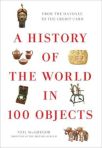
But what is it? Drawing by Henry Marks.
A recent opinion piece in the New York Times, written by the president of Wesleyan University Michael S. Roth, points out something disturbing that seems to have infected our youth: A type of perpetual cynicism born of teaching students to think critically about their world, but not following up with teaching them to also find meaning in it.
Mr. Roth suggests that the traditional liberal arts goal of teaching critical thinking has devolved into something focused too much on the critical, and not enough on the thinking. It starts when professors teach students how to tear apart written texts, as if being critical (i.e. cynical) were the sole purpose and pursuit of education.
Yes, there’s a certain satisfaction in being critical of our authors, but isn’t it more interesting to put ourselves in a frame of mind to find inspiration in them?…Our best college students are very good at being critical. In fact being smart, for many, means being critical.
And it continues when students assume the role of distant and disdainful commentator, one step removed from the object of their scrutiny. The sad result is that these students have come to believe intelligence reveals itself in their ability to describe everything that is wrong with a written work, but nothing that is right.
The inquirer has taken the guise of the sophisticated (often ironic) spectator, rather than the messy participant in continuing experiments or even the reverent beholder of great cultural achievements.
Mr. Roth gives the example of having to ask his students to “put their devices away” when he shows them movies in class. As a former film studies major, I find this especially distressing. When I was in school, we read essay upon essay about film’s transformative power, largely related to the obvious analogies between dreaming and watching a movie. But to feel cinema’s power in that way, you have to give yourself over to the experience. In other words, you have to take emotional and intellectual risks. From what Mr. Roth describes, today’s students prefer their culture served cold, and at arm’s length.
As debunkers, [today’s students] contribute to a cultural climate that has little tolerance for finding or making meaning — a culture whose intellectuals and cultural commentators get “liked” by showing that somebody else just can’t be believed. But this cynicism is no achievement.
I agree with Mr. Roth that cynicism is no achievement. And, if his assertions about modern-day students’ lack of interest in being inspired by art and culture and thought are true, then my next question would be, where did they learn to take such a cynical view of their world? Is this an effect of our modern culture, which some call corrosive (although, really, don’t those voices erupt in every generation)? The inevitable aftermath of postmodernism? The result of education trends going back to the 1960’s, when nearly everything about higher education was called into question? Maybe Mr. Roth will write a follow-up piece in which he teases apart the roots of the problem he has identified. I’d be interested in his thoughts.
Further exploration:
Books
 Flow. “Psychologist Mihaly Csikszentmihalyi’s famous investigations of “optimal experience” have revealed that what makes an experience genuinely satisfying is a state of consciousness called flow. During flow, people typically experience deep enjoyment, creativity, and a total involvement with life. In this new edition of his groundbreaking classic work, Csikszentmihalyi demonstrates the ways this positive state can be controlled, not just left to chance. Flow: The Psychology of Optimal Experience teaches how, by ordering the information that enters our consciousness, we can discover true happiness and greatly improve the quality of our lives.”
Flow. “Psychologist Mihaly Csikszentmihalyi’s famous investigations of “optimal experience” have revealed that what makes an experience genuinely satisfying is a state of consciousness called flow. During flow, people typically experience deep enjoyment, creativity, and a total involvement with life. In this new edition of his groundbreaking classic work, Csikszentmihalyi demonstrates the ways this positive state can be controlled, not just left to chance. Flow: The Psychology of Optimal Experience teaches how, by ordering the information that enters our consciousness, we can discover true happiness and greatly improve the quality of our lives.”
 A History of the World in 100 Objects. “When did people first start to wear jewelry or play music? When were cows domesticated and why do we feed their milk to our children? Where were the first cities and what made them succeed? Who invented math-or came up with money? The history of humanity is a history of invention and innovation, as we have continually created new items to use, to admire, or to leave our mark on the world. In this original and thought-provoking book, Neil MacGregor, director of the British Museum, has selected one hundred man-made artifacts, each of which gives us an intimate glimpse of an unexpected turning point in human civilization. A History of the World in 100 Objects stretches back two million years and covers the globe. From the very first hand axe to the ubiquitous credit card, each item has a story to tell; together they relate the larger history of mankind-revealing who we are by looking at what we have made.”
A History of the World in 100 Objects. “When did people first start to wear jewelry or play music? When were cows domesticated and why do we feed their milk to our children? Where were the first cities and what made them succeed? Who invented math-or came up with money? The history of humanity is a history of invention and innovation, as we have continually created new items to use, to admire, or to leave our mark on the world. In this original and thought-provoking book, Neil MacGregor, director of the British Museum, has selected one hundred man-made artifacts, each of which gives us an intimate glimpse of an unexpected turning point in human civilization. A History of the World in 100 Objects stretches back two million years and covers the globe. From the very first hand axe to the ubiquitous credit card, each item has a story to tell; together they relate the larger history of mankind-revealing who we are by looking at what we have made.”
Articles
Technology: Myth of Multitasking. “[T]here is no such thing as multitasking — at least not the way you may think of it. The fact is that multitasking, as most people understand it, is a myth that has been promulgated by the “technological-industrial complex” to make overly scheduled and stressed-out people feel productive and efficient.
